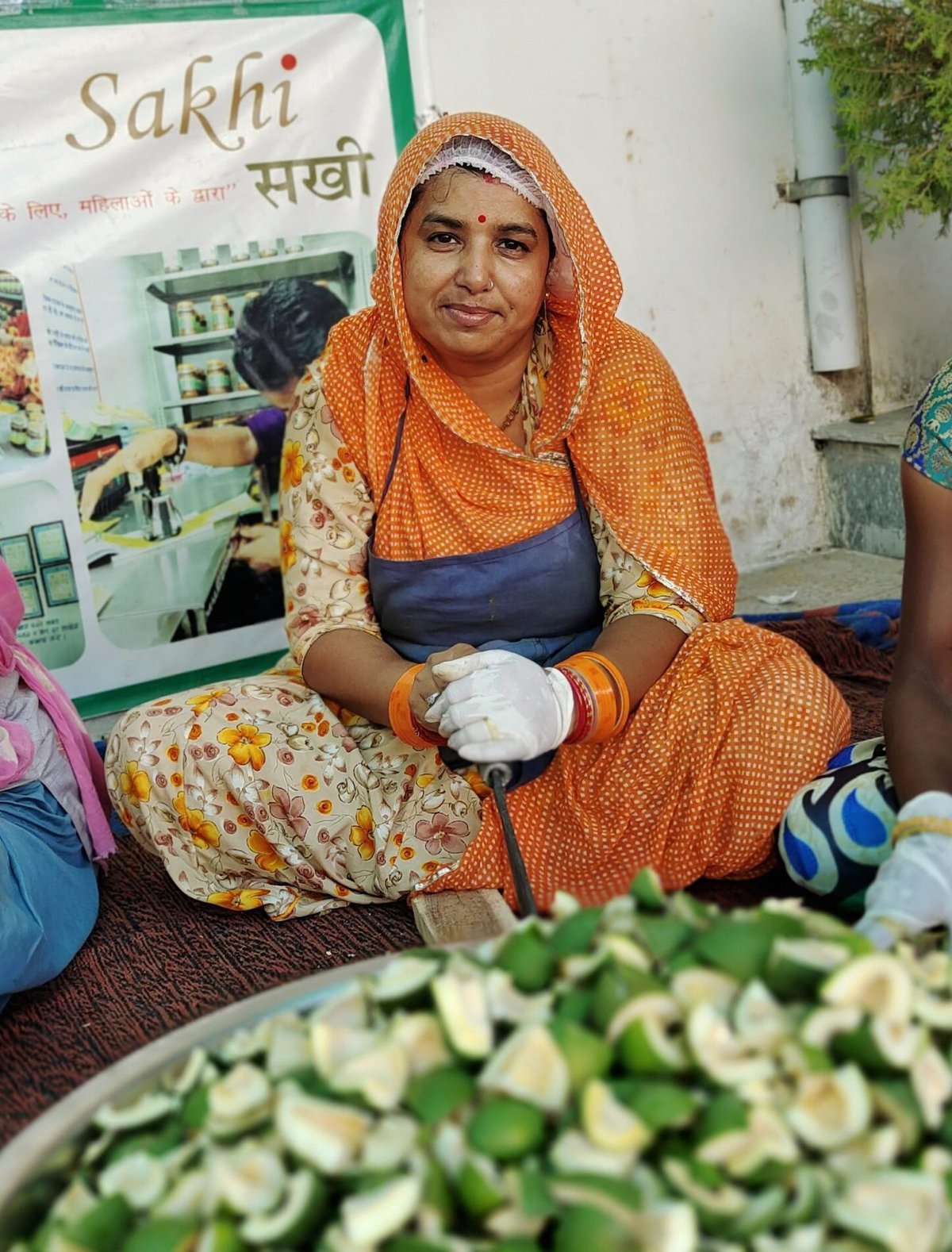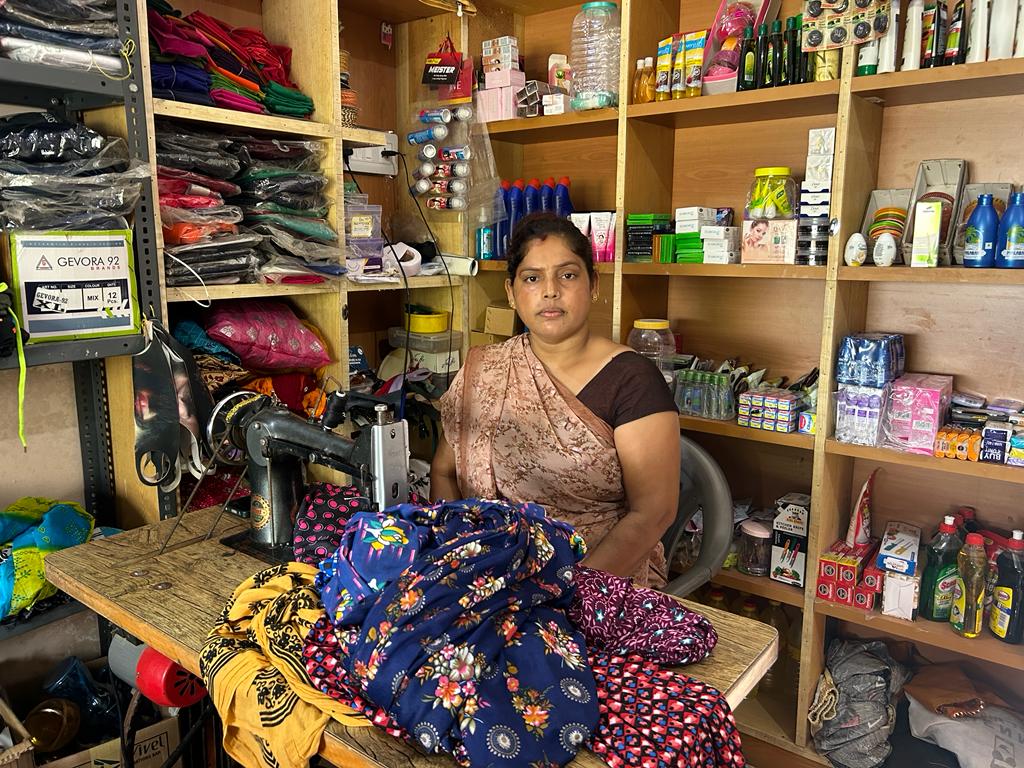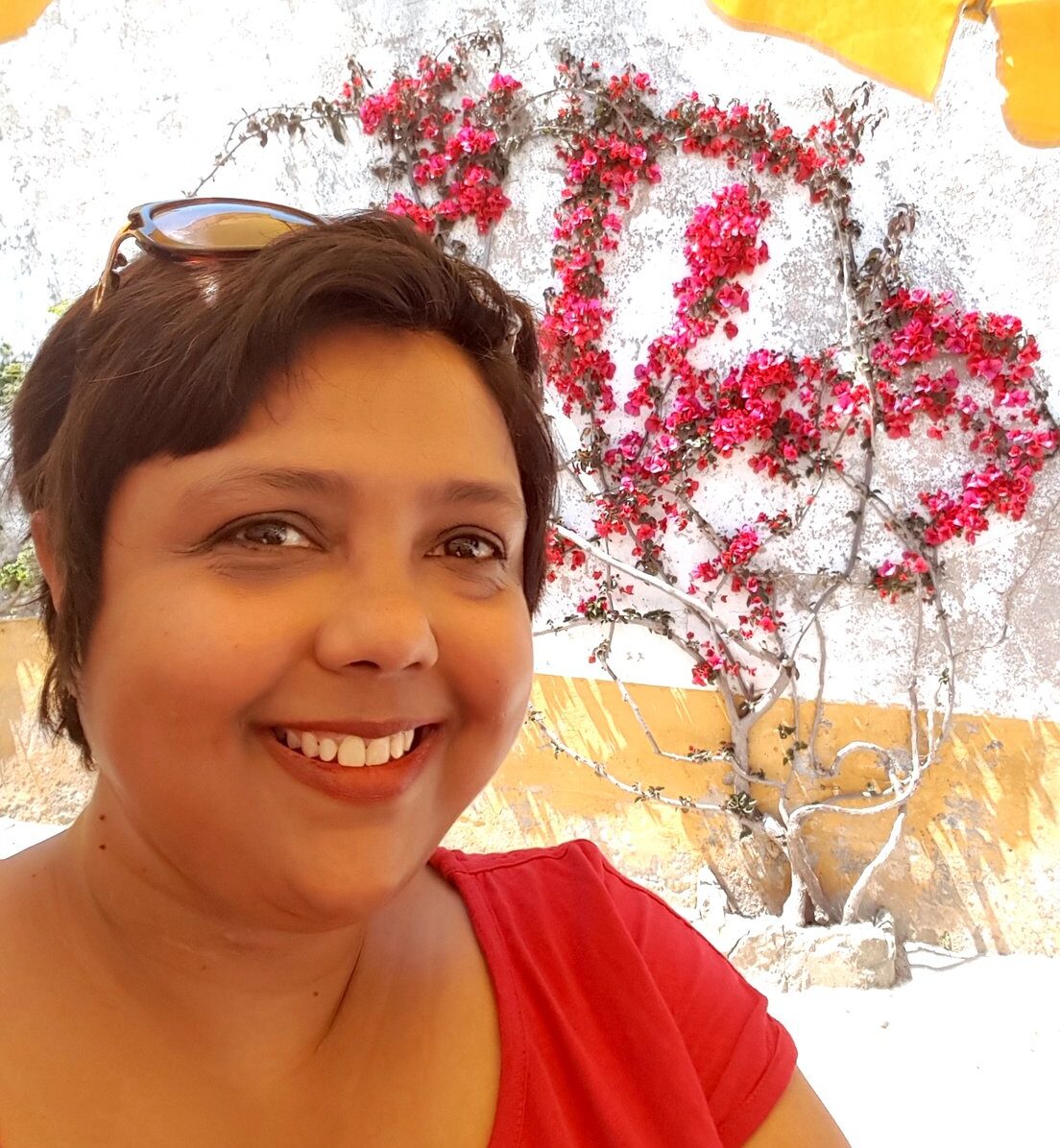Venkatamma and Vijayalakshmi are women farmers from Mahboobnagar in the south Indian state of Telangana, considered one of the poorest regions of India. Farmers here grow a variety of crops, from grains and lentils to cotton and chilis, but have always been dependent on loans to buy seeds and fertilizers before crop season, and occasionally even for everyday subsistence during times of drought or crop failure. For a long time, their only source for such loans were local moneylenders, who charged anywhere from 36 to 60 percent as interest.
Farmers like them all over India spend their entire lives in debt, just paying back the interest on miniscule loans.
Venkatamma and Vijayalakshmi are now directors at the farmers services producer company they set up along with other marginalized farmers in 2012 to eliminate middlemen from the sale process. These cooperatives buy directly from small farmers and sell at market rates, and also procure seeds and fertilizers at wholesale prices for the community.

These farmers were able to make it out of the exploitative system with financial support from Rang De, a peer-to-peer lending platform, through their former local partner Access Livelihoods Consulting India, a social enterprise working in the Telangana region. Thanks to these farmer cooperatives, hundreds of small farmers in the region are now out of the debt trap, and able to get fair prices for their produce.
In peer-to-peer lending, or p2p lending, people with the money to invest — and the mindset to help — give out small loans to those in need for their work, or occasionally, education.
Rang De’s founders, Ramakrishna NK and Smita Ram, say they were inspired by Muhammad Yunus and his work making microcredit available to the poorest communities in Bangladesh. But they knew they needed to do more than just provide credit; they needed to bring those without access to banking and loans into the formal financial system.
According to the Global Findex database report of 2021, 78 percent of Indian adults (people over 15 years of age) had a bank account. At first glance, this suggests a healthy, inclusive public finance system. But this number has stagnated since 2017, and a significant number of these accounts lie dormant, especially since the pandemic. And given India’s population, this means that over 130 million people have no way into formal financial institutions.
Loans are even trickier. Even those with skeleton bank accounts can’t get business loans for various reasons, including lack of official identification cards or pledgeable assets. Farmers and artisans, small business owners and micro-entrepreneurs — a majority of them women — are most affected by this, and forced to pay extortionist levels of interest (to moneylenders) even to tide over everyday crises.
Weighed down by negative news?
Our smart, bright, weekly newsletter is the uplift you’ve been looking for.By investing in people who lack access to formal financial institutions, Rang De helps them gain entry into the credit rating bureaus. “We actually welcome individuals who do not have a credit score, and end up completely excluded from the financial system,” Smita Ram says.
This, in turn, makes them eligible for future loans from banks — a slow but significant change Rang De has seen over the years. Ram says that the idea is not to replace banks or financial institutions, but to get them to look at such entrepreneurs with respect.
Venkatamma and Vijayalakshmi’s story is the perfect example of how a small p2p loan has achieved this in just ten years.
These loans could be as low as, say, $200 to buy seeds for the next farming season. Even this seemingly small amount has proven to have the power to change lives completely, giving borrowers not just a much-needed financial boost, but greater confidence and self-respect, too.

Karuna Ben, from Achhidra, a village in Gujarat with only 300 families, has built a multipurpose home enterprise, offering everything from beauty services to stitched garments and groceries. Her loan amount was roughly $600 — and with that, she has now reached a stage where, in her own words, “people in the village have started looking up to me.” She would now like to pay it forward, by training and employing another woman in her shop.
For Mathra Senani, from another village in the central Indian state of Madhya Pradesh, a loan of $360 enabled her to buy an extra sewing machine and adequate raw materials, which helped her expand her tailoring business. The 27-year old mother of two runs the business along with her sister. “I feel proud that I am able to spend my own money on household expenses and for my children’s education,” she says.
As India’s only peer-to-peer social investment platform, Rang De works with local development agencies in 14 states across the country. These impact partners, as they are known, have a track record of working with local communities, and pay Rang De a transaction fee for their loans — not a cut of the loan amount as commission or by way of interest charges, but a flat fee that is used by Rang De for administrative expenses.
Rang De has been operational since 2008 and has been regulated by the federal Reserve Bank of India since 2019. It now operates within a formal category called “non-banking financial companies.” And Rang De is clear about what it is not: a crowdfunding platform or a microfinance agency.
Since September 2019, Rang De has disbursed more than 16,000 loans to the tune of Rs.560 million (roughly $6,820,632 USD) – loans made possible by over 8,000 social investors who lend to farmers, artists, vendors, entrepreneurs, businessmen and women.
Those wishing to borrow set up a page on Rang De’s website, with a photograph and a short video where they explain in their own words why they need this capital. “We want to retain the dignity of both lending and borrowing,” says Sukhada Chaudhary, VP of communications and content at Rang De.
Borrowers take that to heart: As Senani, who used her loan to expand her tailoring business, explains, “I always make sure that I pay the interest on time. It is very important, so that I can take more loans in the future.” Indeed, Rang De shows a near 100 percent record of repayment — which keeps investors coming back.
As the divide between urban and rural India grows ever larger, Ram sees the peer-to-peer lending construct as a potential bridge. “There are many urban Indians who want to give back to society, but there is always a doubt about who receives the money and how they are going to use it — is it even going to the right place and people,” she says. With peer-to-peer lending, credibility comes from two factors: regulation and communication, since all the details are readily available to the investors.
Neelam Maheshwari, an expert in rural livelihoods and micro-entrepreneurship, says that this model brings much-needed transparency and accountability, apart from gaining the trust of people who want to invest in a good cause: “This is not charity, because charity fatigue is a real thing — how much can one person just give?”
Ram calls it “humanizing credit,” allowing investors (never called lenders in this ecosystem) to decide whom they want to invest in and to stay connected with their investees through the dashboard on the website, where they can find up-to-date information about each loan. She says this has helped investors take interest in and build empathy for their borrowers.
“If there is a delay in repayment, you get to know the reasons up front. And at no point have I had investors who are like, ‘Oh my god, this community is in distress. How will you recover the money?’ It’s always, ‘This community is in distress. What can we do more, what can we do better to help them overcome the situation?’”
Ram and Maheshwari both say that although p2p lending in the social sector has great potential to grow in a market like India, there are several barriers, including high operational costs and lack of flexibility. This also perhaps explains why many such platforms have started and shut down in Africa and southeast Asia.
Yet this model has worked for Rang De, thanks to what Chaudhary describes as its “human-led approach,” in which access, agency and empathy come together. Other potential p2p lending platforms might benefit from the spirit of customization that is at the core of Rang De’s ethos, where borrowers are seen as individuals and not a homogeneous mass.

To Maheshwari, “the best thing about peer-to-peer lending” is how customizable it is, given that rural micro-enterprises are an informal sector with different occupations having diverse needs. Ram describes the need to do away with cookie-cutter loan models as one of their key learnings over the years.
“Our loan products are designed based on who is borrowing and why they are borrowing, their cash flow outlook, their repayment ability. All of this is actually taken into account before the loan products are designed, so that the loan does not become burdensome for the communities,” she explains.
For Venkatamma and Vijayalakshmi, peer-to-peer lending has made a world of difference. They’ve gone from borrowing small amounts of money for extortionist rates to becoming community leaders — and they’re talking about expanding their company to help more women farmers like themselves.





